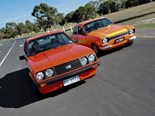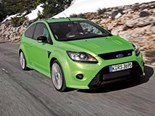Ford Laser TX3 Turbo 4WD - Buyer's Guide



|
In its day the Ford Laser TX3 Turbo 4WD proved to be a giant killer. Good ones are now getting hard to find
Ford Laser TX3 Turbo 4WD
Australians can be endemically slow at adopting technologies that in other parts of the world underpin automotive advancement.
We haven’t been big fans of the diesel car (possibly a good thing) and while our roads and outback tracks are now brimming with all-wheel driven ‘SUVs’ we really never became enchanted by the concept of a 4WD passenger or performance car.
Subaru, Mazda and Mitsubishi in the late 1980s all had a go at getting the buying public interested in all-wheel drive chassis and boosted engines. In there as well from 1987 was a 4WD version of Ford’s Laser but it didn’t attract much interest until the bigger-engined KF version arrived in 1990.
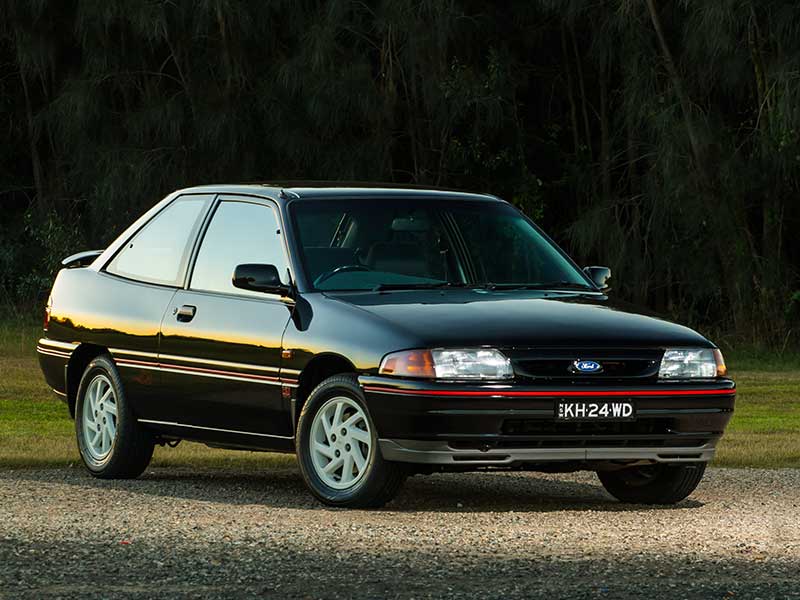
The KF and later KH Lasers shared their entire structure and most mechanical innards with Mazda’s well-loved 323. A nose job and tail-tuck managed to create a shape that was sufficiently different from the Mazda and the TX3 was sold only in three-door form.
The 1840cc engine with its IHI turbocharger and conservative 8psi of boost did a decent job and left plenty of scope for enhancement. Output in standard trim was 117kW, torque a paltry 206kW developed at 3000rpm.
However, with Goldilocks gear ratios and only 1180 kilograms to move, the TX3’s mid-range acceleration was impressive. From there on it was up to the owner and just how tempting of Fate they wanted to be. Cars with intercoolers, uprated internals and adjustable boost can deliver 220-250kW while maintaining reasonable reliability.

Helping keep the weight – and the list price – down was an almost complete absence of creature comforts. The TX3 did manage to offer power steering and electric mirror adjustment but you wound your own windows up and down, the sound system was basic and air-conditioning an option at around $2000 on top of the $26,245 starting price.
Peek underneath a TX3 and you could see immediately where a lot of the money had gone. Helping direct the engine’s output to wherever it would do the most good was a sophisticated AWD system with viscous coupling as used in the serious rally contenders including Toyota’s GT-4 Celica and the Mitsubishi Galant VR4.
Underpinning the TX3’s great grip was a simple but very competent independent suspension plus super-quick 2.75:1 steering rack. Front and rear struts with anti-roll bars killed body-roll in anything but the tightest of bends yet provided sufficient compliance to keep tyres in contact with the road, even when challenged by nasty mid-bend corrugations.
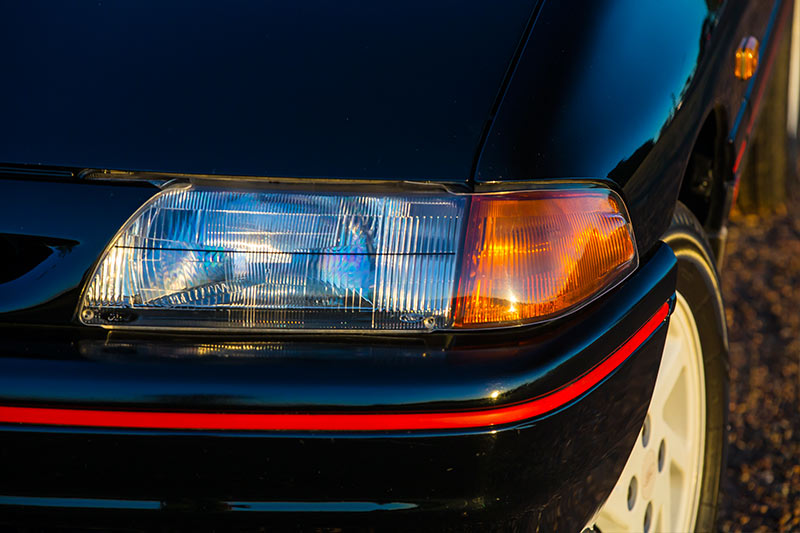
This compact Ford may have looked more at home in events involving unsealed roads, but the arduous Bathurst 12-Hour event delivered the TX3 4WD its most significant motorsport result.
At the inaugural event in 1991 and despite being monstered by V8 Commodores, Supra Turbos and a Galant VR4 with rally ace George Fury heading its driving team, the sole TX3 finished in second place and only three laps adrift of the winning Supra.
A couple of years later the Laser’s racing career ended in ignominy when a car co-driven by Dick Johnson and son Steven detonated its turbocharger before completing a lap. Some days it just doesn’t pay to get out of bed.
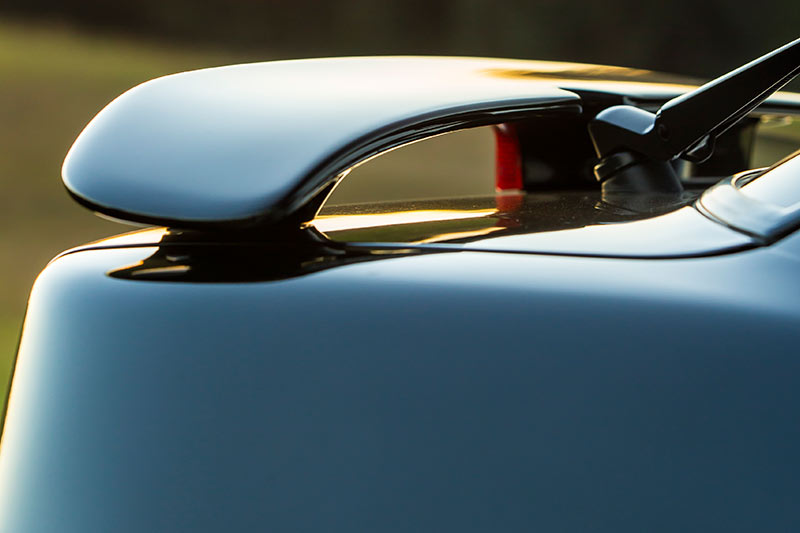
October 1992 brought a Series 2 version of the KH TX3 with minimal change but a major price increase. Australia was battling recession and the AUD was a basket case, causing imported car and component prices to soar. For a while, Ford managed to keep TX3 4WD versions just beneath the $30,000 price barrier but within months that was pushed upward by a further $2000 and Ford’s endearing All-Wheel Drive was no more.
ON THE ROAD
It's not every day that someone tosses you the keys to a car you secretly would love to own and say "Have fun, try not to bend it."
Words to that effect were spoken in 1992 outside Ford’s Sydney HQ before navigational guru Wayne Kenny and I set off to route check that year’s Camp Quality Car Rally; a semi-serious endurance event that exposed competitors to some of the more daunting sections of road (track) to be found in SE Australia.
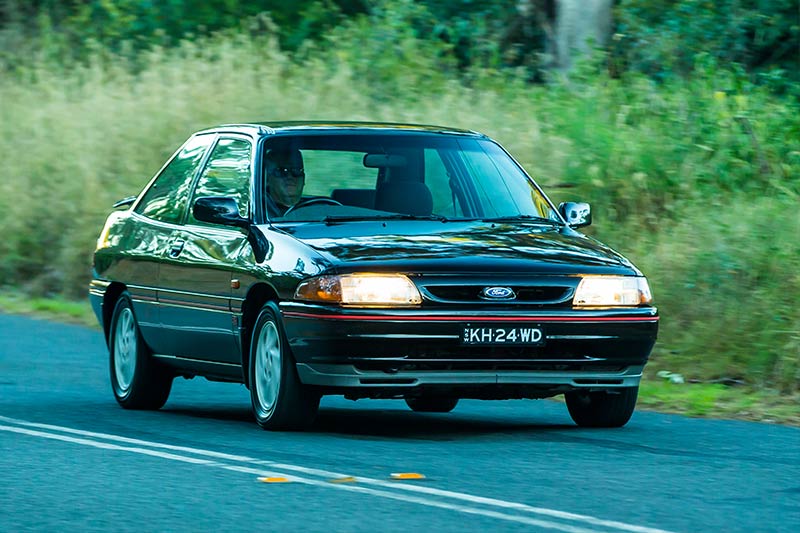
Ford’s Press Test fleet never seemed to be without at least one TX3. Some years earlier at an event sponsored by Shell to promote its 95 Octane Premium fuel, members of the media and automotive PR chaps (of which I was one) spent literally hours hooting around what remained of the wonderful Warwick Farm circuit in a Turbo TX3 described by its FoMoCo minder as ‘a bit tweaked’.
Our KH was black so in the interests of safety the folk at Ford had thoughtfully striped it up so the thing stood out like canine genitalia no matter what its surroundings. Easy to find in the motel carpark though.
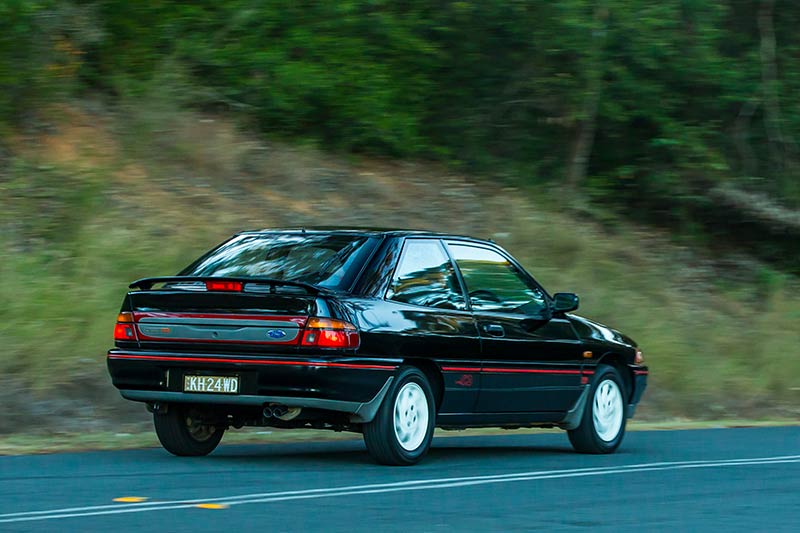 Down the highway and from there to some wonderfully deserted Snowy Mountains bitumen the baby Ford went about its task without ever looking or feeling spectacular. Even at quite prodigious pace it never stepped out of line or caused concern. Slipping back a couple of cogs to pass something you could feel just where the turbocharger was at its peak but the torque splitting technology meant no fighting of the wheel as happened with front-wheel drive turbo cars like the Telstar or Mitsubishi Cordia.
Down the highway and from there to some wonderfully deserted Snowy Mountains bitumen the baby Ford went about its task without ever looking or feeling spectacular. Even at quite prodigious pace it never stepped out of line or caused concern. Slipping back a couple of cogs to pass something you could feel just where the turbocharger was at its peak but the torque splitting technology meant no fighting of the wheel as happened with front-wheel drive turbo cars like the Telstar or Mitsubishi Cordia.
Once into some serious dirt roads our little black Laser grew horns and a tail. The harder you pushed the more it would tease. "Is that the best you've got?" it seemed to be saying.
 It wasn’t, but caution on roads shared with other traffic was of prime importance and just how hard the TX3 could have gone under those conditions was never discovered. However the time taken for us to traverse one winding, narrow section that climbed for 67 kilometres above increasingly scary drops, was four minutes quicker than the best achieved by pre-1980s two-wheel drive vehicles running with the road closed to oncoming traffic.
It wasn’t, but caution on roads shared with other traffic was of prime importance and just how hard the TX3 could have gone under those conditions was never discovered. However the time taken for us to traverse one winding, narrow section that climbed for 67 kilometres above increasingly scary drops, was four minutes quicker than the best achieved by pre-1980s two-wheel drive vehicles running with the road closed to oncoming traffic.
The Laser’s four disc brakes were brilliant and even when pounded during rapid and very steep descents never complained. No ABS yet but for those who like getting stuck in on loose surfaces that’s probably a good thing.

The tyres might look a little skimpy and a lot of Lasers have been fitted over the years with larger, lower-profile rubber. However during 3500 kilometres of challenging driving I can’t recall an instance where we were wished for more – or even different – rubber.
Gearing is crucial to the TX3’s ability to maintain pace. Whether winding in second slot through tight terrain or loping along a deserted stretch of dead-flat bitumen the Laser can deliver an instant response or keep your fuel bill in check.

As everyday transport the TX3 isn’t going to offer as much in terms of interior space or accessibility. However, they are most likely these days to be bought as a fun car not family transport. And that’s not to say that the front section of the cabin isn’t a pleasant place to be.
On the journey south from Sydney my fellow occupant, who measured close on two metres tall and 120 kilograms, found driving or occupying the passenger seat not at all uncomfortable. The rear seat however is better suited to those with short legs or aged 10 and under.

BUYING
The most difficult aspect of owning a TX3 is finding one. Cars like our well-kept black example rarely appear for sale in the open market. Owners with cars of this quality will normally have a string of numbers to call if ever they do decide to sell.
Scouring on-line sales sites revealed a few 4WD TX3s available but none which was going to have enthusiasts queuing around the block. One car on offer recently looked OK but had done more than 350,000 so an asking price of just $5500 was probably fair.
TX3s can command double that money and more but they need to be in exceptional, original condition or significantly modified.

Of the modded cars kicking around, some have been lowered so far that it must affect usability, Shortened springs, stiff shock absorbers and near solid bushings work fine if the car is used exclusively for cutting quick laps on a race circuit. However they will make it feel rough, nervous and in some situations dangerous under normal on-road conditions.
Checking service records, especially relating to the turbocharger, cylinder head or transmission repairs can save lots of money. A car that has been treated recently to a replacement turbo, had the valve-train reconditioned, a clutch and timing belt can provide years of economical motoring.
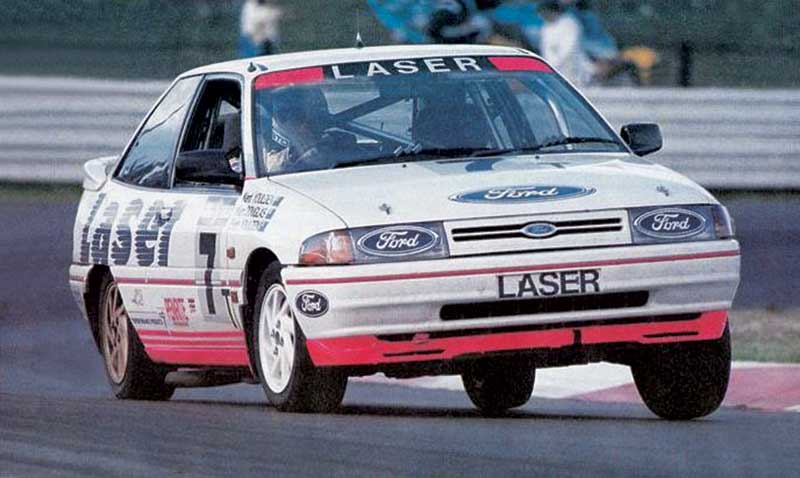
1991 BATHURST 12-HOUR LASER
Cliff mentions the car that came second at Bathurst and it seems that vehicle may still be in existence. An article we tripped over is part of a Flinders University archaeology (?!) project and the author, Elaine Hanneson, had this to say: "I bought the actual car as a burnt-out wreck as spare parts for my other car, without knowing any of its history.
"While dismantling it, I found the CAMS log book sealed in a cavity surrounded by the melted plastic of the glove box and found out that it was the car that went to Bathurst.
"The Ford Laser TX3 4 Wheel Drive Turbo model was the sports car of the Laser range, and my car was part of the marketing strategy, with its success at the Bathurst James Hardie 12 Hour Production Car race of 1991, second outright, heralded on promotional material.
"Unlike many infamous 'production cars', the Laser had few modifications, which were illegal by the rules of that race. It was probably built at the last minute as the photo in the log book (which itself was issued only ten days before the event) is not one of the actual car."
See the full article at the Flinders university site: tinyurl.com/lazer4wd Do you know where the car is now? Pop us a note at uniquecars@primecreative.com.au.
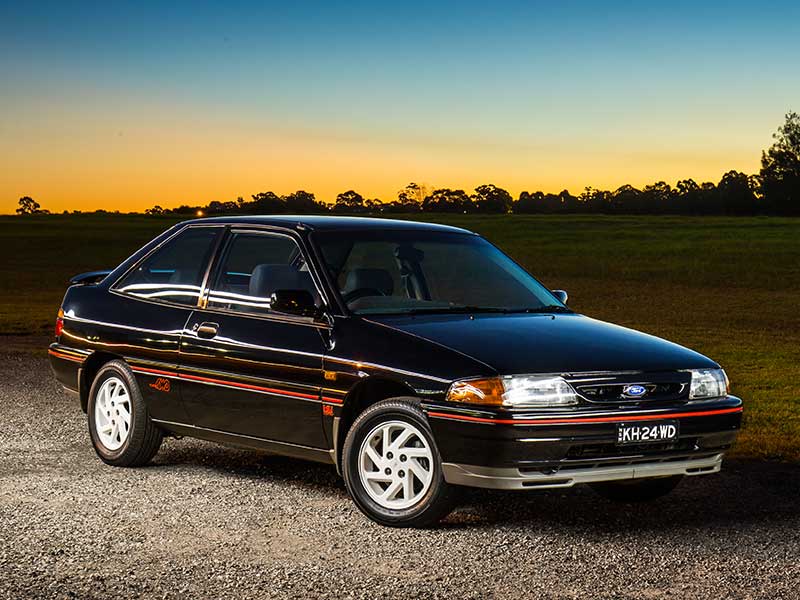
BUYER'S CHECKLIST
Body & Chassis
TX3s that have been crashed, left to go rusty or just neglected are rarely going to justify the cost of restoring them or even having poor quality work redone. With the car on jack stands or a hoist, look for repairs to the chassis rails, dents under the floor and sills. Also check the rear suspension mounting points for rust and cracking. rom there move to checking the doors for sagging or poor fit and the skins for rust. Close inspection is needed for the outer sills, lower mudguards and hatch. In addition to showing rust bubbles it can be misaligned and suffering damage to the rubber seal or supporting struts. New strut replacements are still available. The plastic bumpers need to be properly attached, straight and not cracked. Look at the front one from underneath as they are vulnerable to being belted by gutters.
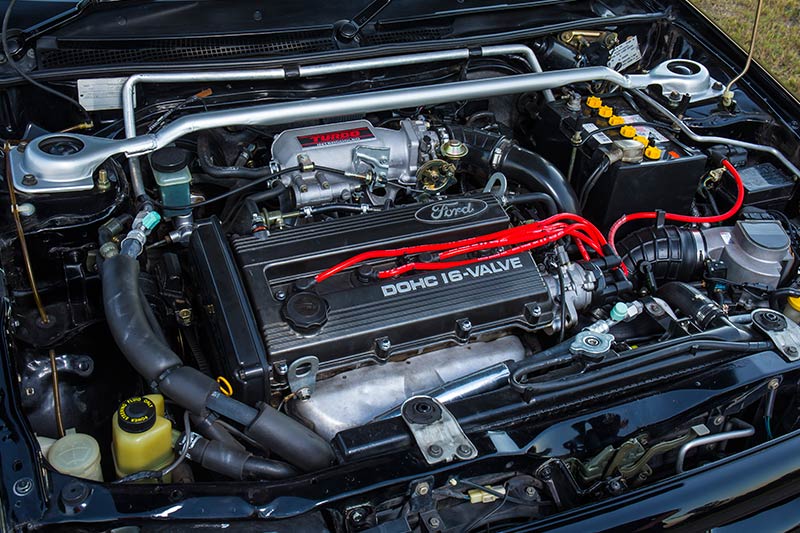
Engine & Transmission
Excessive boost and abuse are the reasons TX3 engines often wind up in land-fill. That said, there seem to be plenty of replacement twin-cam Mazda turbo engines available for $1200-2000. You might need to hunt though for the proper ‘Ford’ cam covers. Stock boost was set at conservative levels to cope with standard 91 Octane ULP so the engines will stand a decent increase - up to 14psi some sources say - without breakage. Check with a turbocharging specialist before fiddling. Smoke of any colour from a turbo exhaust is sending a message that big spending will soon be required. Overheating is deadly to these cars so installing a new water pump, hoses and having the >radiator flushed immediately after purchase can be worthwhile.
Suspension & Brakes
Here’s where a lot of money can be spent if you choose a car that hasn’t been kept up to the mark by its previous owner. The suspension isn’t especially complex but there are a lot of bits under there that have been working hard for nigh on 30 years and will need replacement. Everything needed seems to be available and from several sources; strut replacements from $400 per pair, or suppliers for around $4000 will supply packages comprising springs, adjustable struts and new bushings. Brake rotors can be upgraded to suit performance applications but stick with standard if the car isn’t worth a great deal. These start at around $120 per pair. While the engine is running and car stationary maintain constant pressure on the pedal to check for hydraulic problems.
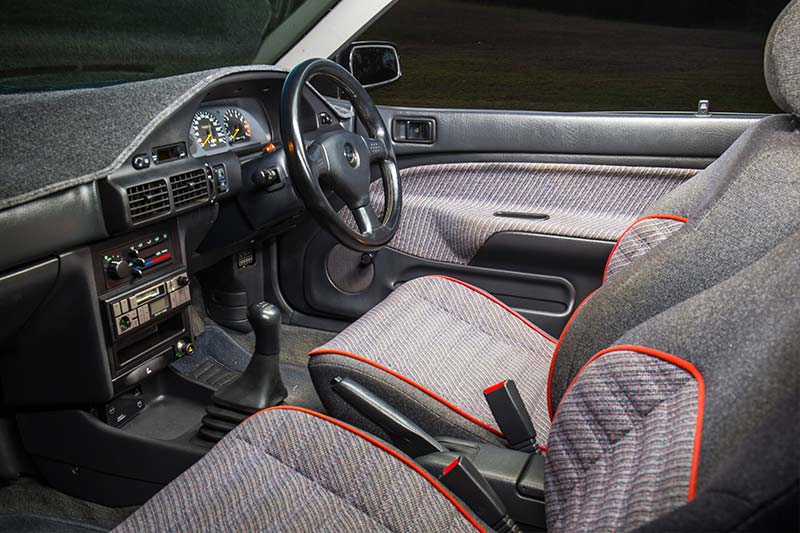
Interior & Electrics
Unless the car has been kept away from summer heat and sunlight there is every chance a lot of interior plastics will be warped, cracked or crumbling. First place to look is the dash-top, then the console, heater control surround, door handles and control levers. If the inside is factory fresh then you have found a true TX3 gem. If not, a lot of internet scouring and calls to wrecking yards awaits. Interior components specific to the TX3 are scarce however we did find a decent-looking steering wheel for $150. Electrical components seem plentiful and cheap, including brand new starter motors at under $150.
SPECIFICATIONS
1990-94 Ford Laser TX3
NUMBER BUILT: N/A
BODY: integrated body/chassis three-door hatch
ENGINE: 1839cc four cylinder with fuel injection & turbocharger
POWER & TORQUE: 117kW @ 6500rpm, 206Nm @ 3000rpm
PERFORMANCE:
0-100km/h:|8.1 seconds,
0-400 metres 15.5 seconds
TRANSMISSION: 5-speed manual
SUSPENSION: Independent with struts, coil springs and anti-roll bar (f) Independent with struts, coil springs and anti-roll bar (r)
BRAKES: Disc (f) disc (r) with power assistance
TYRES: 195/60/14 radial
Unique Cars magazine Value Guides
Sell your car for free right here
Get your monthly fix of news, reviews and stories on the greatest cars and minds in the automotive world.
Subscribe

.jpg)











